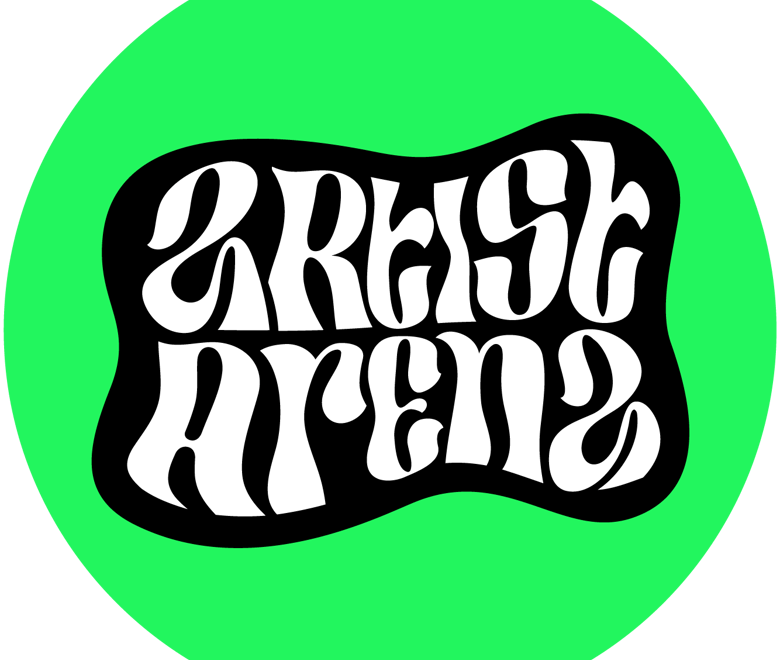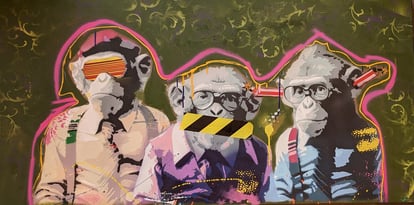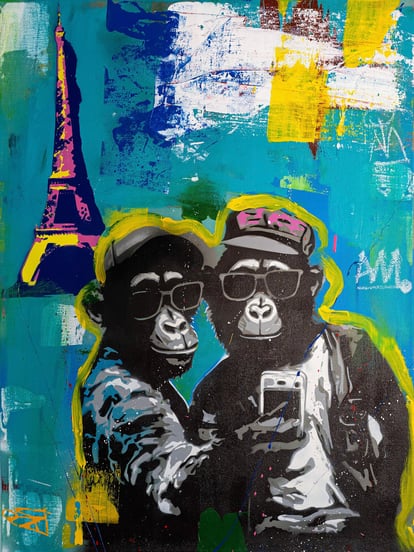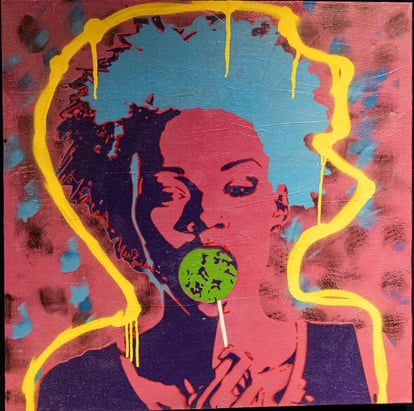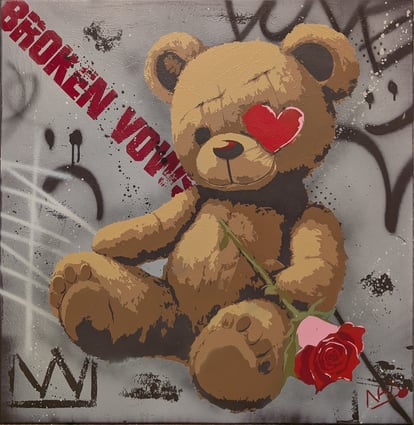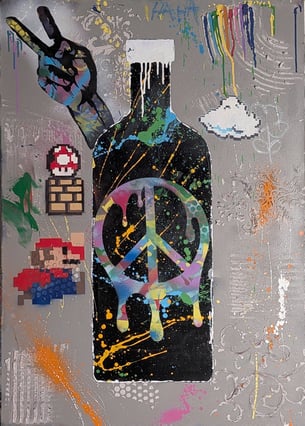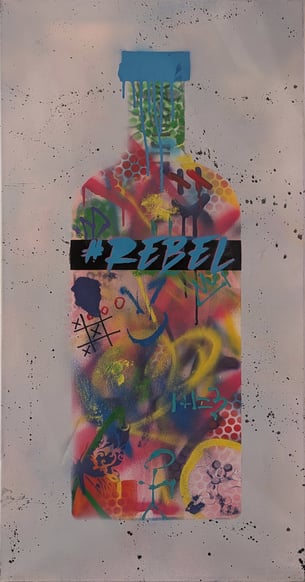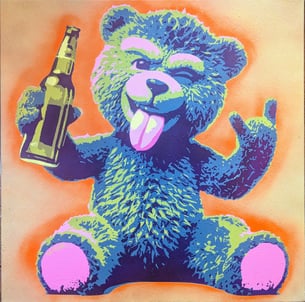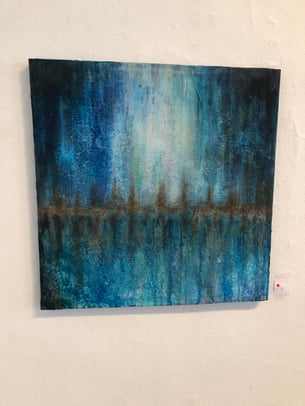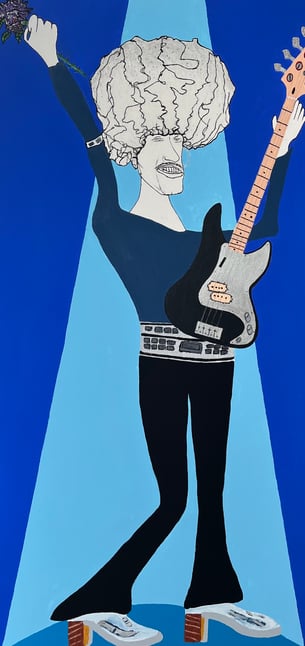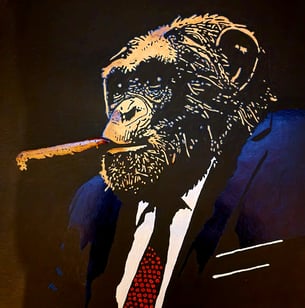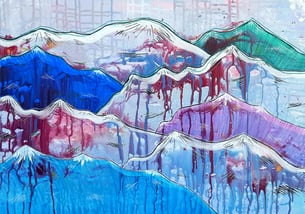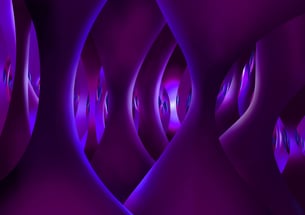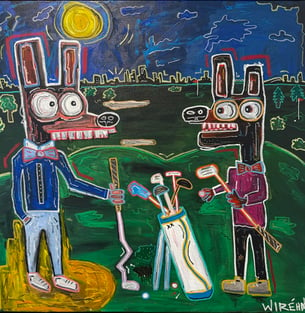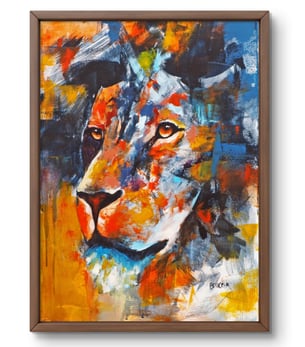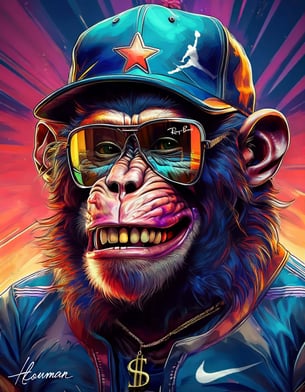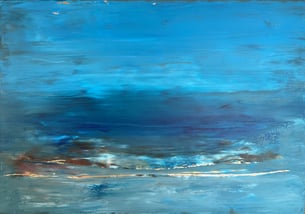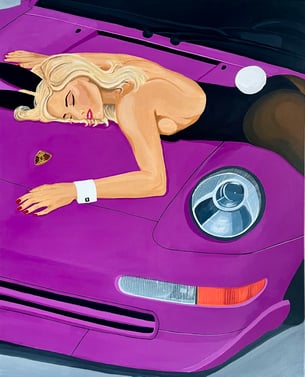About
I am ManiPopart, a PopArt artist who thrives on blending vibrant colors and confident messaging in my work. Strongly influenced by Warhol and Basquiat, I use spray paint and stencils to deliver bold visuals with small, impactful messages. My style is energetic, cocky, and experimental, often working with materials like wood, resin, and canvas.
I was born to Greek parents and raised in Sweden, which has given me a unique perspective that influences my art. After spending 15 years in the corporate world, I made the decision to "break the chains" and dedicate myself fully to my passion for art. Since then, I’ve had the privilege of exhibiting my work in Sweden, Germany, and Greece. One of my most significant achievements is having my PopArt portrait of Olof Palme displayed in the Olof Palme Museum in Sweden.
In my work, I often include hidden hobo signs and other symbolic imagery, inviting viewers to explore the layers of meaning behind each piece. Through color, form, and historical references, I aim to connect with people and spark conversations that go beyond the surface of the canvas.

3 Wise Apes
Inspiration
I draw my inspiration from the great rebels of the art world—figures like Banksy, Basquiat, and Warhol, who each brought something revolutionary to their craft. Banksy influences me with his subversive street art, challenging societal norms and provoking thought through powerful, often politically charged stencils. His approach to art as activism resonates with my own desire to make bold statements through my work.
Basquiat, with his raw, chaotic energy, inspires me to embrace the imperfections in my pieces. His fearless combination of text, symbols, and imagery broke down barriers in the art world, and I aim to channel that same spirit of rebellion in my work.
Then there’s Warhol, whose iconic PopArt showed that art could reflect the everyday world. His ability to blur the lines between high and low culture speaks to me as I explore the intersection of art, pop culture, and bold messages. All of these artists, along with rebels throughout history, fuel my creative drive to break boundaries and challenge the status quo.
I’m entirely self-taught, having learned most of my techniques through countless hours of YouTube tutorials, trial and error, and a lot of imagination. The process has been as much about experimentation as it has been about honing my skills. Watching other artists share their methods online gave me the foundation to explore everything from stencil-making to spray paint techniques. But it’s been through mistakes and revisions that I’ve truly developed my style—pushing the limits of materials like resin, wood, and canvas, and incorporating new mediums like augmented reality to keep evolving.
Fantasy plays a huge role in my process. I don’t always have a clear idea of how a piece will turn out when I start; I allow myself to get lost in the work, letting the materials guide me. For me, art is about constant learning and curiosity. I’ve embraced the fact that not everything comes out perfect, but through each misstep, I get closer to achieving something unique and powerful. It’s this blend of practical learning and imaginative freedom that fuels my artistic growth.
In my exhibitions, I explore the intersections of PopArt, history, and culture. With bold, energetic color palettes and inspiration from artists like Banksy, Basquiat and Warhol, I capture iconic moments and figures. One of my standout works is a PopArt portrait of Olof Palme, which is currently on display at the Palme Museum in Sweden. By using spray paint and stencils, I create a sense of urgency and rebellion, reflecting my own journey of stepping away from the corporate world to pursue my passion. I enjoy experimenting with materials like canvas, wood, and resin, always aiming to push boundaries and offer fresh perspectives to those who view my art.
In my work, I primarily use spray paint and stencils, combining bold colors and striking contrasts to create visually powerful pieces. I draw inspiration from PopArt legends like Banksy, Warhol and Basquiat, but I constantly seek to push beyond traditional boundaries by exploring new mediums. I experiment with a wide range of materials, including canvas, wood, resin, and epoxy, aiming to bring fresh textures and dimensions into my art.
The technique of layering stencils allows me to achieve precise, detailed designs, while spray paint helps convey a sense of immediacy and energy in each piece. I'm also fascinated by hobo signs, which I subtly integrate into my work, adding an extra layer of meaning for those who look closely. Additionally, I use Artivive to bring my art to life through augmented reality, enhancing the viewer’s experience by revealing hidden elements when viewed through the app.
I am always on the lookout for new materials and technologies that can elevate my creative process, as I believe that evolving my techniques is key to keeping my art fresh and impactful. Whether it's working with clay, experimenting with 3D printing, or introducing digital layers, I'm committed to exploring every avenue to develop my art further.
When I approach the creative process for a painting, I often begin with a surge of ideas before starting the actual artwork. This is where I allow myself to be spontaneous and let inspiration flow freely, experimenting with concepts, colors, and the overall direction of the piece. I usually start by imagining the message I want to convey and how I can translate that visually using vibrant colors and contrasting elements.
However, once I begin working on the actual artwork, I switch gears to a more disciplined, methodical approach, especially when working with stencils. The process requires precision and focus to ensure the layering and alignment of each stencil is perfect. If the stencils don’t align properly or if the spray paint isn’t applied correctly, it can ruin the entire composition. This stage demands patience and careful planning, as even small mistakes can shift the intended outcome of the piece.
Despite the structure required for stencil work, I still leave some room for improvisation, especially when experimenting with different textures or adding final touches. This balance between creativity and discipline is key to producing artwork that is both dynamic and visually striking.
